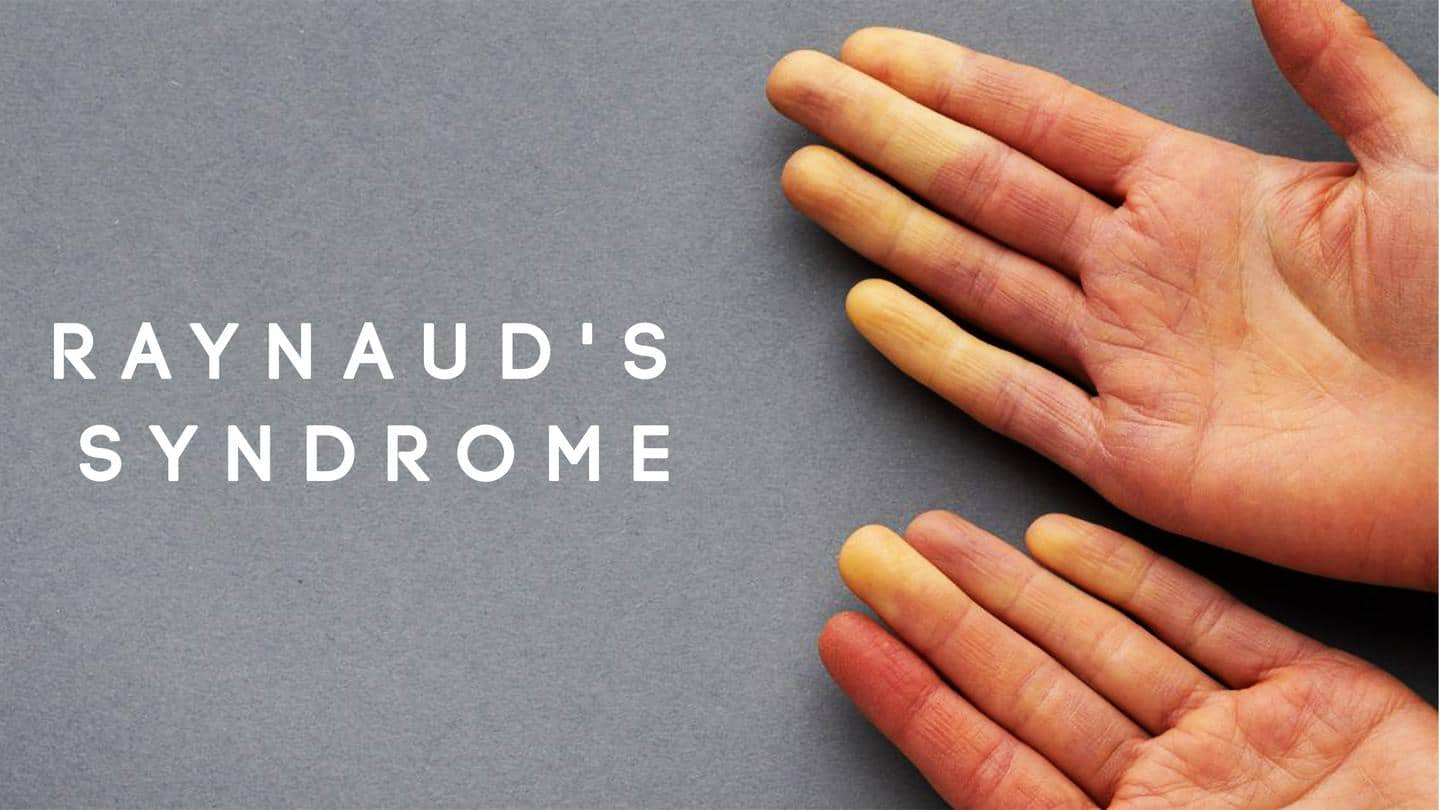
All you need to know about Raynaud's Syndrome
What's the story
Raynaud's syndrome is a health disorder that affects small blood vessels in the toes, fingers, tip of the nose, and ears making them numb and cool in response to stress and cold temperatures. It is caused by a disruption in the complicated mechanism that controls blood flow in the skin. Here's all you need to know about this disorder triggered by cold temperatures.
Context
Here's what our expert says
Raynaud's phenomenon is bluish discoloration, cooling, and numbing of the extremities due to sudden exposure to cold temperatures, vibrations, and stress. It is due to the constriction of the small vessels in these areas. While it is usually associated with an autoimmune disease like lupus, it can be observed in association. Raynaud's phenomenon should be evaluated to rule out any underlying autoimmune disease.
Types
Types of Raynaud's syndrome
Named after the physician Auguste Gabriel Maurice Raynaud, this disease was first identified in 1862. There are two main types of Raynaud's syndrome:- Primary Raynaud's syndrome - This is not associated with any other existing medical condition and the symptoms are mild. Secondary Raynaud's syndrome - Usually caused by an underlying problem like lupus or rheumatoid arthritis, it attacks your body's connective tissues.
Symptoms
Symptoms of the disease
The common symptoms of Raynaud's syndrome include cold and numb fingers or toes due to lack of insufficient oxygen. The skin turns white or blue when you are stressed or it is too cold but normalizes after warming up when your fingers and toes tingle. Lack of oxygen to tissues for an extended period of time may cause skin ulcers, painful sores, or gangrene.
Causes
Causes of Raynaud's syndrome
Exposure to cold weather, sweat cooling on the skin, air-conditioned rooms, anxiety, stress, putting hands in cold water, and reaching into the freezer can trigger the syndrome. Underlying diseases like connective tissue disease, cancer, rheumatoid arthritis, artery diseases, carpal tunnel syndrome, smoking, and certain medications may also cause this syndrome. The onset of the winter season can increase the chances of developing the disorder.
Risk factors
Risk factors related to the disease
One in 10 people is most likely to develop the condition and most of them get primary Raynaud's syndrome. Women are nine times more likely to get it as compared to men. The disease usually occurs in people aged between 15 and 25. People aged above 35 and those diagnosed with rheumatoid arthritis, scleroderma, and lupus are most likely to get secondary Raynaud's syndrome.
Treatment
Can the disease be treated?
There are several diagnostic tests available to determine the disease. A dermoscope can be used to check the blood vessels around your fingernails and a nail fold capillaroscopy is a useful test to determine the condition. Lifestyle changes like avoiding cold spaces, or touching cold objects, managing stress, and strong emotions, and wearing enough warm clothes in cold weather can help manage the condition.